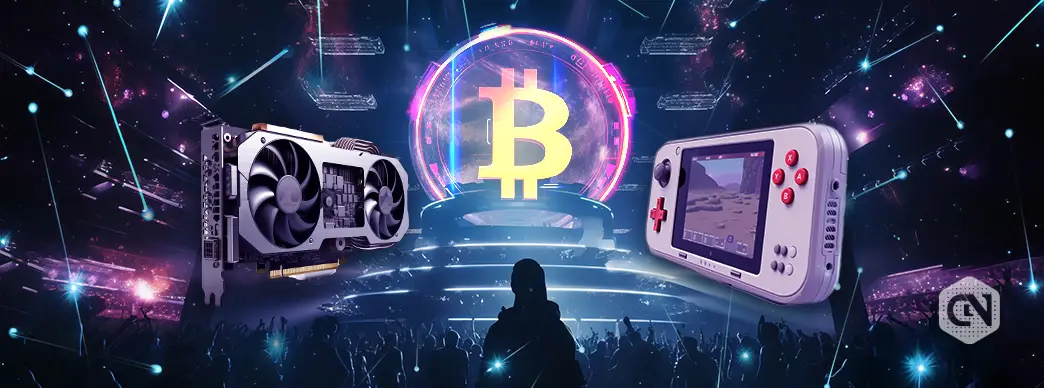Government and financial institutions and many other industries have been disrupted by cryptocurrencies and blockchain technology, and the gaming industry is one of the most benefited. By combining decentralization from the blockchain with interactivity from gaming, the world has witnessed the advent of crypto-gaming. This sphere allows players to buy, sell, and profit from the virtual hearings and equipment within the game safely. Nowadays, It’s important to study crypto-gaming, the existing technologies that foster its advancement, and the probable future directions of growth that will transform the industry.
The Current State of Crypto Gaming
It has been seen that the blockchain gaming market has evolved significantly by 2024. According to the data obtained, the market size was estimated to be $128.62 billion in 2022 and is estimated to grow and reach $154.46 billion by the end of 2024 with an expected growth rate of $614.91 billion by 2030 with a CAGR of 21.8%. This rise can be attributed to integrating blockchain into gaming, providing players with decentralized possession of in-game assets and a novel means of P2E models.
However, there has been a surge in the adoption of crypto gaming, which has sparked the interest of regulators. Due to the recent emergence of digital assets, the legal system of every country is trying to define the type of this kind of property and how to regulate it. As can be observed, different jurisdictions have different policies and regulations. This creates problems for developers and players, affecting the industry’s growth rate. Moreover, the integration of crypto gaming mechanics, which is also found in online crypto blackjack, has shown how blockchain technology can amplify player engagement and reshape classic gaming formats.
Key Technologies Driving the Revolution
The revolution in crypto-gaming is spearheaded by some serious technology developments:
- Blockchain & Decentralized Networks: Blockchain ensures secure and transparent trading and is the ultimate proof of ownership of virtual goods. Decentralized networks minimize the role of managers in gaming and offer players chances for self-management.
- Smart Contracts & Mechanisms of In-Game Economy: Smart contracts perform and verify the terms of a contract in a third-party-free manner. In games, they facilitate all types of in-game economies as well as tasks like automated transaction of rewards and escrow functions among gamers.
- Non-Fungible Tokens (NFTs): Apart from being treated as collectibles, NFTs provide players with ownership, trading, and monetization of game assets. Such an ownership model also raises the players’ interactions and offers developers additional sources of revenue.
- Interoperability: There is a growing emphasis on the portability of assets from one game to another or one platform to another. Interoperability makes the way for interconnected gaming spaces where gamers are able to shift the things they possess easily from one virtual world to another.
Forecasts for 2025 and Beyond
Looking forward, a number of trends are set to define the future of crypto gaming:
- Market Forecast: Because blockchain gaming has emerged, its market has experienced exponential growth. Analysts forecast that it may also grow to a $90 billion market this year, 2030, due to increased investment and its integration in most organizations.
- Emergence of Decentralized Game Creation: DAOs will have a massive role to play in game creation.Since these organizations can invest and manage game projects, the games can be made more player-focused and creativity-oriented. With further development of DAOs, the use of crypto technologies could further change gaming ecosystems to decentralize and democratize them. This change could introduce new possibilities in domains such as game mechanics and economic frameworks, where players could have a say in decisions with governance tokens or even interact with crypto blackjack-type mechanisms within the game economy.
- Mainstream Partnerships and Regulation: Cooperation between well-established gaming companies and blockchain businesses will continue to grow, benefiting both sides by developing an amalgam of gaming structures that incorporate the features of both formats. Further, it is possible that the regulations will become more refined, result in more coherent standards, and lead to increased confidence among investors and players.
- The Role of AI and AR/VR in Crypto Games: Artificial Intelligence (AI) can facilitate more efficient game creation and playing. Conversely, Augmented Reality (AR) and Virtual Reality (VR) can render gameplay more realistic and earthy. The use of these technologies along with blockchain can turn gameplay into adaptive and interactive experiences.
Impact on Gamers and Developers
The crypto revolution will redefine the game dynamics between developers and players:
- For Gamers: Gamers will be given sole ownership of virtual assets in a game, the potential to receive real value for participating, and the right to make decisions about a game’s creation. This enables customers and makes them more loyal. The rise of games illustrates how these principles can update conventional gaming models.
- For Developers: New monetization strategies (tokenized assets / P2E) brought by blockchain technology. It also becomes possible to make governments more decentralized, which aids in creating better games that suit players’ needs.
Conclusion
The integration of blockchain technology and games heralds a new generation in this industry. Future growth trends When referring to the future of Crypto gaming toward 2025, there is no doubt that this industry will revolutionize with the help of technological advancements and shifts in market trends.
